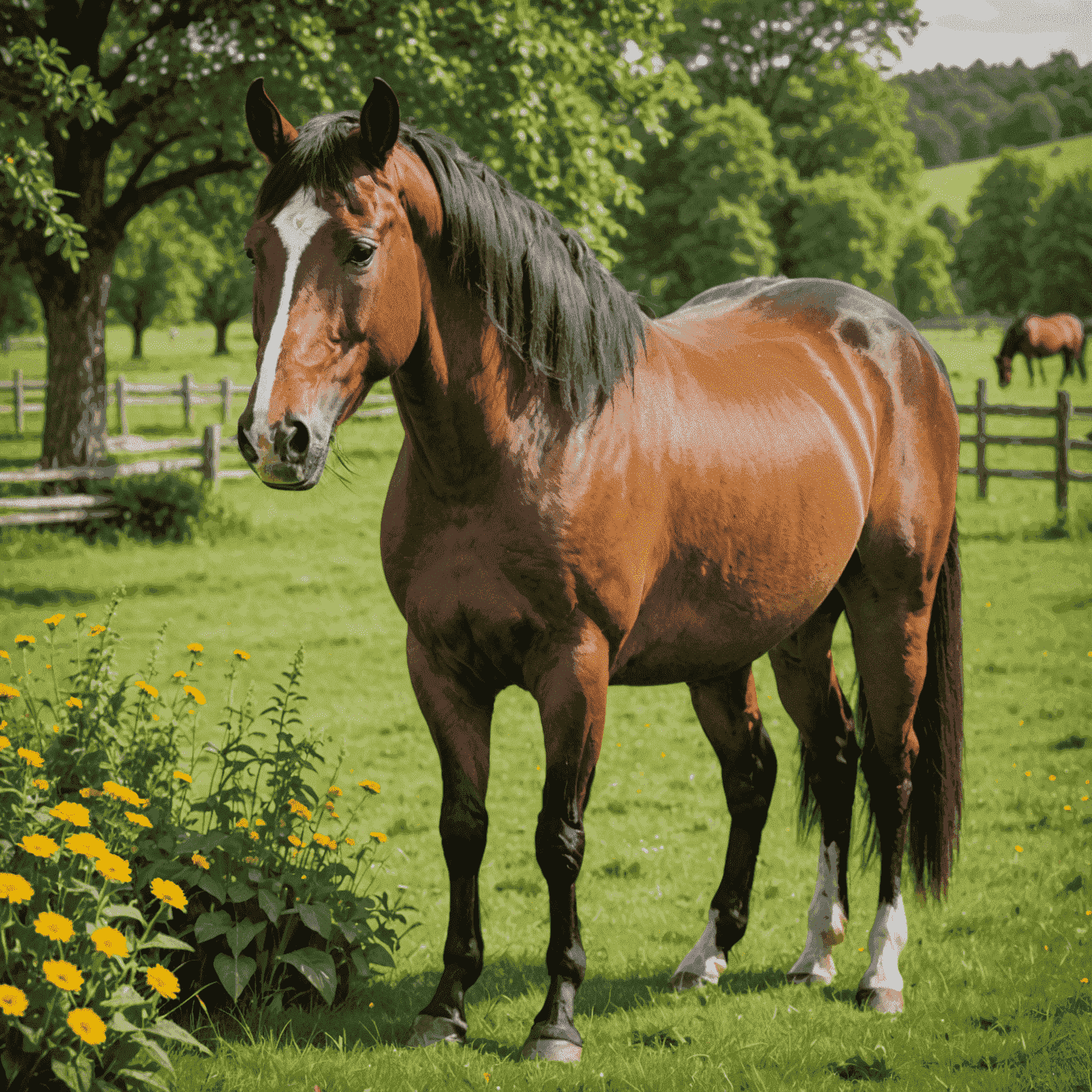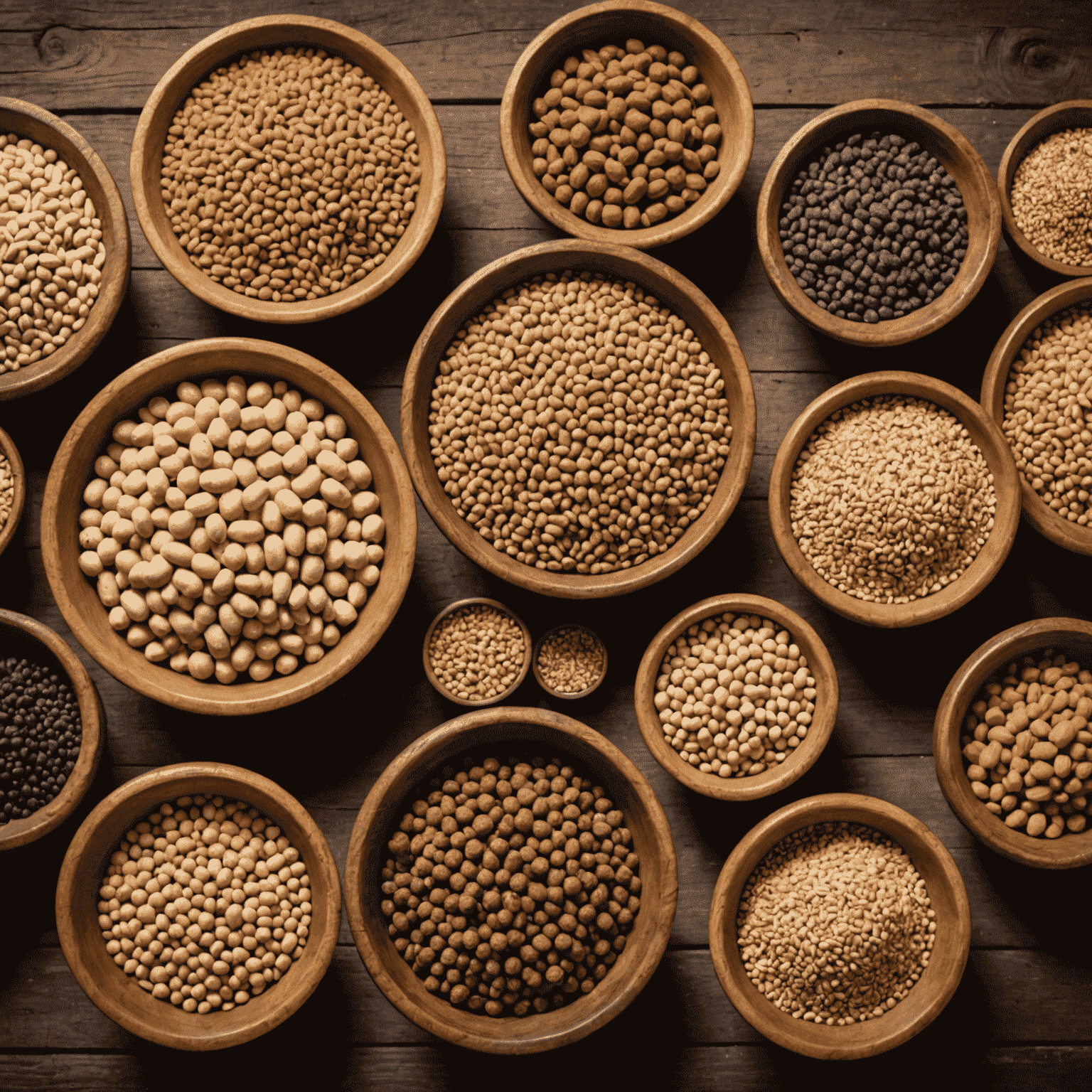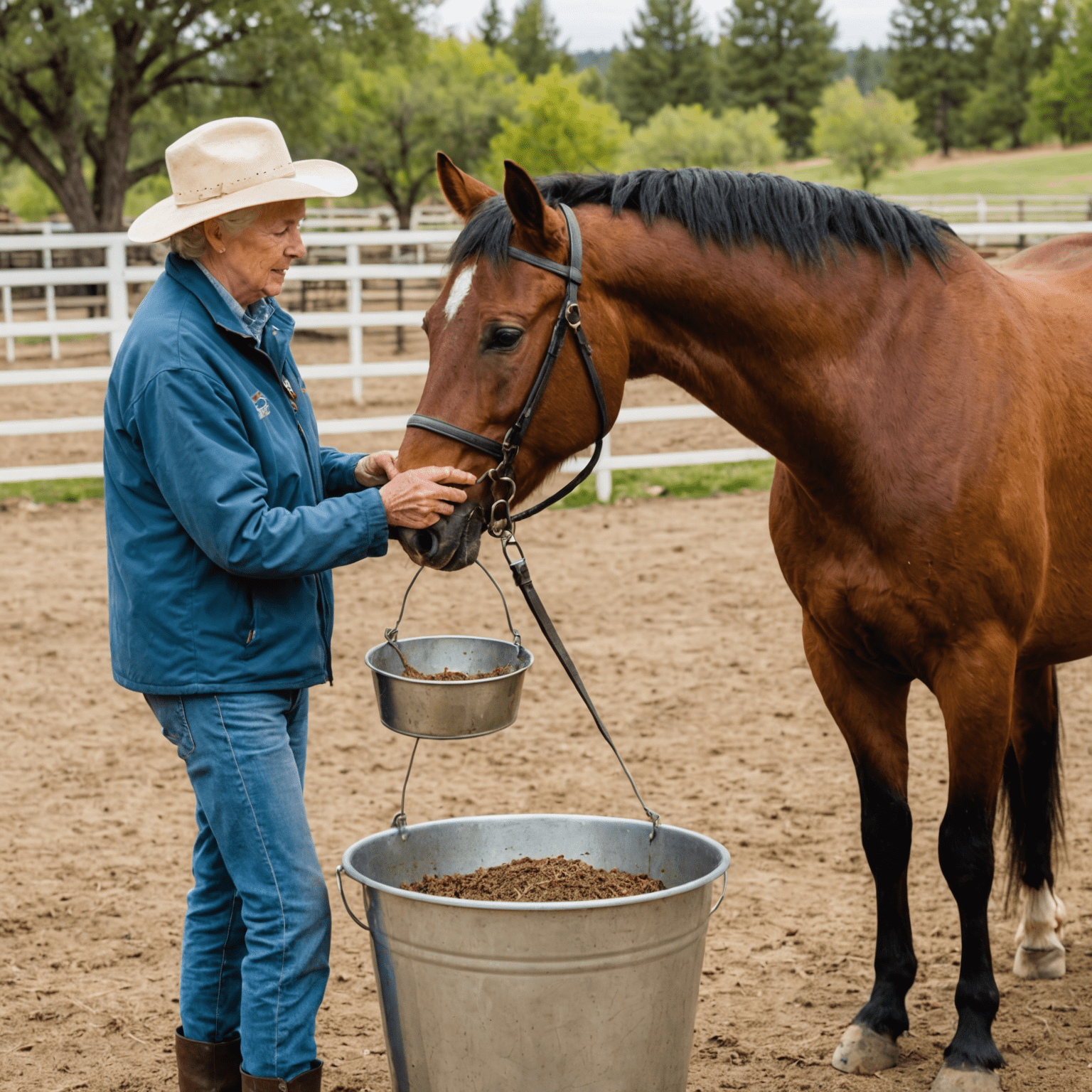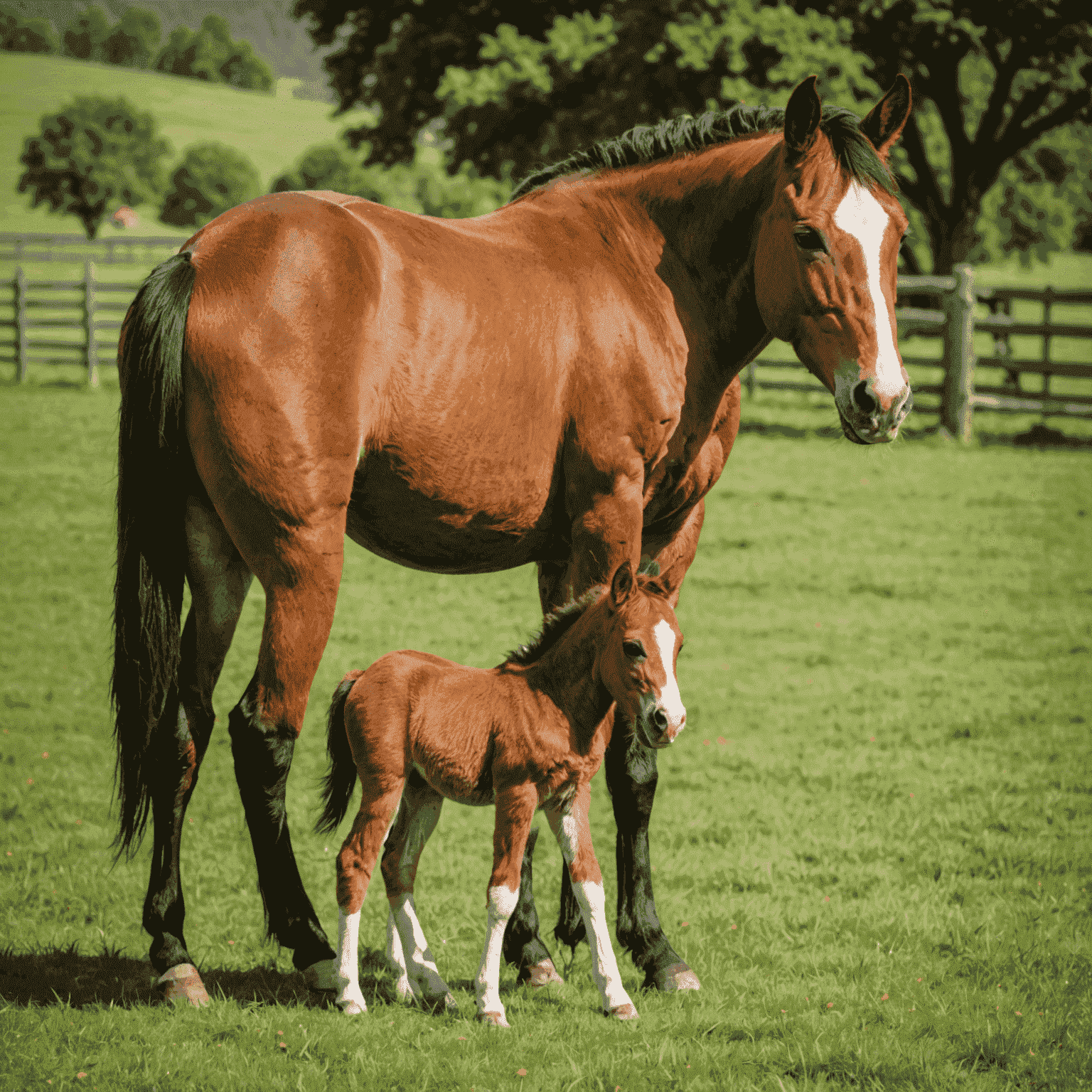Essential Horse Nutrition Guide

Understanding the Equine Digestive System
Horses are hindgut fermenters with digestive systems designed for continuous grazing. Unlike humans, horses produce stomach acid constantly, making regular access to forage essential for preventing digestive issues like ulcers. Their digestive tract is approximately 100 feet long, with the cecum and large intestine housing beneficial bacteria that break down fiber through fermentation.

Key facts about equine digestion:
- Horses have relatively small stomachs that function best when processing small amounts of food continuously
- The cecum acts as a fermentation vat where fiber is broken down
- Horses cannot vomit, making them susceptible to colic if fed improperly
- The entire digestive process takes approximately 36-72 hours
The Foundation: Forage First
Forage should constitute 1.5-2% of a horse's body weight daily. For a 1,000-pound horse, that's 15-20 pounds of hay or pasture. Quality forage provides essential fiber, vitamins, and minerals while keeping the digestive system functioning properly.
Types of Forage
Grass Hays
Timothy, orchard grass, and bermuda grass are excellent options for most horses. They provide moderate energy and protein with higher fiber content.
Legume Hays
Alfalfa and clover are higher in protein, energy, and calcium. They're beneficial for growing horses, pregnant/lactating mares, and performance horses.
Mixed Hays
Combinations of grass and legume hays can provide balanced nutrition for many horses.
Pasture
Fresh grass provides excellent nutrition when properly managed, though nutritional content varies by season and grass type.
At Heritage View Ranch, we recommend slow-feeding systems that mimic natural grazing patterns, allowing horses to consume forage throughout the day rather than in large, infrequent meals.
Concentrates: When and How Much
Many horses maintain excellent health on forage alone. However, concentrates (grains and commercial feeds) may be necessary for horses with higher energy requirements, such as:
- Performance horses in regular work
- Pregnant or lactating mares
- Growing youngsters
- Senior horses with dental issues
- Hard keepers who struggle to maintain weight

When feeding concentrates, remember these guidelines:
- Never exceed 0.5% of body weight per feeding (5 pounds for a 1,000-pound horse)
- Divide daily concentrate rations into multiple small meals
- Always feed forage before concentrates to buffer stomach acid
- Make any feed changes gradually over 7-10 days
- Select feeds appropriate for your horse's age, activity level, and health status
Creating an Optimal Feeding Schedule
Consistency is crucial for equine digestive health. Establish a regular feeding routine that mimics natural grazing patterns as closely as possible.
| Time | Feeding Recommendation | Notes |
|---|---|---|
| 6:00-7:00 AM | Morning hay ration + concentrates if needed | Always provide hay first, wait 30 minutes, then offer concentrates |
| 12:00-1:00 PM | Midday hay refreshment | Especially important for stalled horses |
| 5:00-6:00 PM | Evening hay ration + concentrates if needed | Largest forage portion before the overnight period |
| 9:00-10:00 PM | Night check hay refreshment | Optional but beneficial to prevent long periods without forage |
For horses with access to quality pasture, adjust hay quantities accordingly while maintaining a similar schedule for any concentrate feedings.
Essential Supplements for Equine Health
While a balanced diet of quality forage and appropriate concentrates meets most nutritional needs, certain supplements can address specific deficiencies or support particular health concerns.
Core Supplements
- Salt/Mineral Block: Provides essential sodium and trace minerals
- Vitamin E: Important antioxidant, especially for limited pasture access
- Omega-3 Fatty Acids: Support skin, coat, and inflammatory response
- Probiotics: Promote healthy hindgut function and digestion
Targeted Supplements
- Joint Supplements: Glucosamine, chondroitin, MSM for joint health
- Hoof Supplements: Biotin, methionine, zinc for hoof quality
- Digestive Support: Aloe vera, slippery elm, or specialized formulas
- Calming Supplements: Magnesium, B-vitamins, or herbal blends
Supplement Selection Guidelines
- Identify specific needs rather than supplementing indiscriminately
- Choose quality products from reputable manufacturers
- Consult with your veterinarian before adding supplements
- Monitor effectiveness and adjust as needed
- Be aware of potential interactions between supplements
Special Considerations for Different Life Stages

Senior Horses
Aging horses often face dental issues that affect chewing ability. Consider:
- Complete senior feeds that can be soaked
- Higher protein content (14-16%) to maintain muscle mass
- Added fat sources for weight maintenance
- Chopped or cubed hay alternatives
- Increased vitamin C and E for immune support

Growing Horses
Young horses require careful nutritional management:
- Higher protein (14-16%) for tissue development
- Balanced calcium:phosphorus ratio (1.5-2:1)
- Controlled energy to prevent growth-related orthopedic issues
- Quality protein sources with essential amino acids
- Appropriate trace mineral levels, especially copper and zinc
Performance Horses
Working horses have increased energy requirements:
- Higher caloric intake proportional to work intensity
- Added fat sources for sustained energy
- Electrolyte supplementation for heavy sweating
- Increased vitamin E for muscle recovery
- Timing nutrition around exercise schedule
Broodmares
Pregnant and lactating mares need additional support:
- Increased energy in late gestation and during lactation
- Higher protein (14-16%) for fetal development and milk production
- Enhanced mineral profile, especially calcium
- Quality forage as the foundation
- Gradual feed increases to avoid digestive upset
Common Nutritional Problems and Solutions
For underweight horses: Increase caloric intake through higher-quality forage, added fat sources (rice bran, flaxseed, oil), and multiple small meals. Rule out dental issues, parasites, or underlying health conditions.
For overweight horses: Limit concentrates, use a grazing muzzle for pasture access, provide lower-calorie forage like mature grass hay, and implement a gradual exercise program under veterinary guidance.
For insulin resistance or PPID (Cushing's):